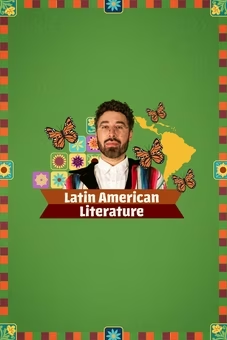
Is a Spider's Web a Part of Its Mind?
Season 7 Episode 16 | 4m 43sVideo has Audio Description, Closed Captions
Orb weaver spiders build webs not only to catch insects, but to extend their senses.
Orb weaver spiders build exquisite spiral webs not only to catch insects, but to extend their senses. Once they shrink-wrap their prey with silk, the nearly blind spiders can store them for later, and read their web's strands as a kind of memory map to guide them back.
See all videos with Audio DescriptionADProblems playing video? | Closed Captioning Feedback
Problems playing video? | Closed Captioning Feedback

Is a Spider's Web a Part of Its Mind?
Season 7 Episode 16 | 4m 43sVideo has Audio Description, Closed Captions
Orb weaver spiders build exquisite spiral webs not only to catch insects, but to extend their senses. Once they shrink-wrap their prey with silk, the nearly blind spiders can store them for later, and read their web's strands as a kind of memory map to guide them back.
See all videos with Audio DescriptionADProblems playing video? | Closed Captioning Feedback
How to Watch Deep Look
Deep Look is available to stream on pbs.org and the free PBS App, available on iPhone, Apple TV, Android TV, Android smartphones, Amazon Fire TV, Amazon Fire Tablet, Roku, Samsung Smart TV, and Vizio.
Providing Support for PBS.org
Learn Moreabout PBS online sponsorship♪ (narrator) Some of nature's most mesmerizing works of art might just be hanging in your backyard.
The artist is an orb weaver spider.
Though it has eight eyes, it's practically blind.
And its sublime compositions aren't just deadly traps.
They're an extension of the spider's senses.
Spider creations come in many forms-- tangles, funnels, sheets, even mixed media.
Intricate spirals are an orb weaver's signature design.
There are thousands of orb weaver species, each with its own style, like this trashline orb weaver.
It hides out in its string of past victims.
Spiders are born web spinners.
See these spiderlings testing out their skills?
To weave these webs, the spider secretes silk through organs called spinnerets.
Spider silk is made mostly of proteins.
The spider uses different types of silk for different purposes.
To start, the orb weaver lays down a scaffolding using a smooth structural silk.
Then, the spider switches to a sticky silk for its main motif, circle after circle of tenacious thread.
It's eyes only see light, dark, and a little movement, so the orb weaver builds by feel.
The spider constructs its ephemeral home in just a few hours or less.
The delicate-looking web is actually five times stronger than steel, If it were scaled up to human size, you couldn't just sweep it away.
If the spider's hungry, it can tighten the strands of its web, making it easier to sense prey.
When a fly crashes into the sticky web, its impact reverberates.
Since the spider can't see well, it feels nearby spokes to zero in on its meal.
It uses sharp fangs to inject a paralyzing venom.
Then the orb weaver basically shrink wraps its prey using a wide sheet of silk.
When it feeds, it repeatedly bites the wrapped up prey, liquefying it so it can suck up all the juices.
Once a meal is all wrapped up, the spider can store it in its pantry for later.
It has no problem finding it again.
Only a handful of invertebrates can remember where things are like this.
So how does an orb weaver do all these things with a brain the size of a poppy seed?
Some scientists think a spider's mind radiates out through the strands of its web, beyond the limits of its body.
It seems this exquisite creation is not just a home, a sophisticated net, or a place to keep food.
It's a map of the spider's memories.
Deep Look knows what you want-- more spiders!
Do black widows really deserve their bad rap?
And why do jumping spiders dance for their lives?
Also, our partner, PBS Digital Studios, wants to hear from you.
It's a quick survey, and you'll get to vote on a new series coming to PBS.
Link in the description.
Thanks.


- Science and Nature

A documentary series capturing the resilient work of female land stewards across the United States.












Support for PBS provided by:

